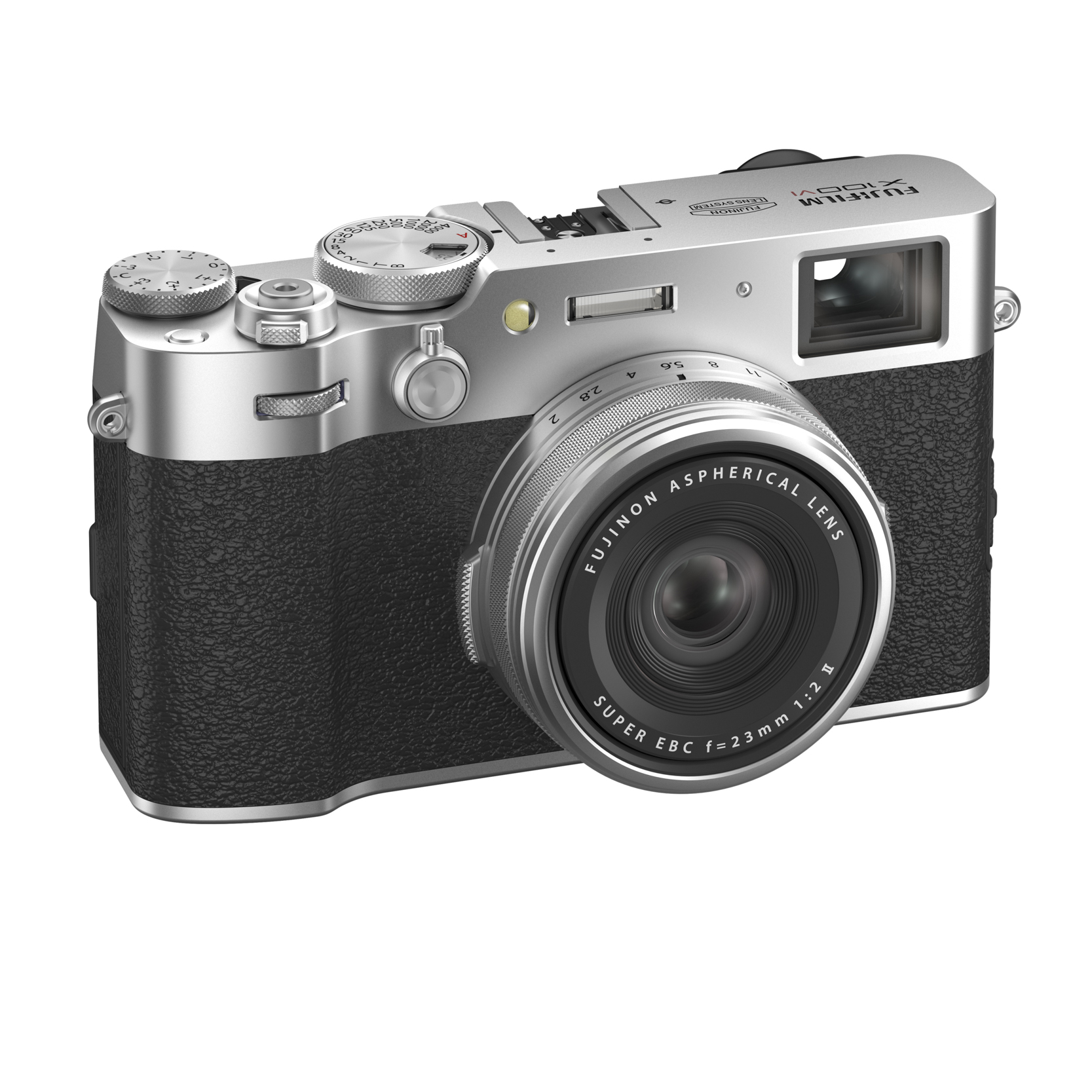As we know, there is more to photography than just owning a camera, although that’s a good place to start. Unless you want to buy a Fuji X100VI, that is. In which case, you might want to think again, and check out some alternatives. And what about depreciation, or even value appreciation? We have some insights to share on this very topic, and a reminder about a book to help you navigate the vintage Leica world. If you splashed out and bought a Leica Q3, we have news about a couple of cool accessories. And even if you haven’t, we have some gear news you can use about linking your camera to your computer.
If you can’t find a Fuji X100VI, consider one of these
You might be fed up with hearing how difficult it is to buy the camera of the moment: the Fujifilm X100VI. If you have set your heart on one, but can’t buy one for love nor money, we are about to add to your misery. Coming soon: an in depth Macfilos review of the camera, complete with our expert opinion on where it stands in the pantheon of compact photography options.
But, in case you are tired of waiting, and prefer taking photos to searching the ad pages, you might find this article helpful. The team at PC Mag have put together their recommended alternatives, all of which are available now. They have selected from their recently reviewed, and highly rated list of small format cameras and lenses. The article includes options covering both fixed-lens and interchangeable lens systems. But their guiding principle was to keep it small.
Helpfully, the folks at PC Mag provide a review score and a link to their full review for each system they mention. You never know, you might find something in the list that’s an even better fit for you than the Fuji.
Grips for all hands
Are you a Leica Q3 owner, looking to grip your expensive camera more securely? If so, we have some emerging gear news you can use. The Helium 3 anti-theft grip for Leica’s Q3 is about to hit the market.
Anti-theft
First up is the Helium Anti-theft grip, so called because it holds an Apple AirTag (see our review of the Oberwerth Q3 case, which also hides an AirTag). It has been designed in collaboration with the well-known photographic expert, Hugh Brownstone, of the One Man and an Elephant site. PetaPixel has covered the full background, but this is Hugh’s YouTube introduction to the new grip.
Aluminium grip for Leica M film cameras
Leica Rumors tells us that Kamerakraft are now opening pre-orders for the LMGRIP aluminium grip for Leica M film cameras. This grip is compatible with every Leica M body except the M5, and is therefore a useful accessory if you have a collection, from the M3 through to the M7. It includes a battery compartment, ARCA-standard tripod rail, a wrist-strap lug and a grippy profile. The grip comes in black or silver anodised finishes or gloss black paint, combined with a walnut or matte black alumium handle. Read the full details here.

Why I think Leica is a good investment

Leica is invariably criticised for its supposedly exorbitant prices. But, as always, there are two sides to the story. It’s the same difference as that between a Rolls Royce and a Ford.
The Ford is cheaper and does the same job, just like a mainstream digital camera. The Rolls is a luxury and costs a lot. But there are people who see the added value in such a vast outlay.
So it is with Leica. Why does the Q3 cost three times as much as Fuji’s (excellent) alternative, the X100VI? It isn’t just the difference in sensor size, although that must account for a chunk of the difference, but it is the Leica ethos (including “Das Wesentliche”) and brand image that makes the Q3 seem more reasonable.
Sebastian Oakley has outlined his views of the investment potential of a Leica from an owner and end-user perspective. It makes interesting reading.
Best USB-C hubs and adapters for Mac
Back in June, Mike Evans covered the almost universal adoption of the USB-C connector and the joys of in-charging (something with which not everyone is in agreement). But USB-C is the connector we have to live with, at least for the next few years until something better comes along.
Fortunately, there is a whole ecosystem of peripherals out there to support your move to USB-C. And who better to lead you through the maze than MacWorld magazine.
Here’s a link to the comprehensive MacWorld article which tells you all you need to know about hubs.

USB-C hubs, with SD-card slots, are an essential travel companion if you own a portable computer which has only USB-C sockets. And when looking for a desktop, photographers are swayed by ease of access of the SD slot. That explains why the Apple iMac is a pain in the slot when it comes to inserting an SD card — the slot is behind the screen and very fiddly to access.
As a result, many photographs prefer the greater accessibility of a stand-alone Mac, such as the Studio. Indeed, our Australian contributor, John Shingleton, has made the change to a Mac Studio for this very reason. After a recent visit to Macfilos World Headquarters in London, he realised the benefits of the easily accessible sockets on the front of the Mac Studio.
Mr Woo woos the little red Leica book
Well-known YouTube vlogger, Mr. Woo, has expressed his imagination for Red Dot Books’ 9th edition of the Leica Pocket Book. He also tells us about some other photography reference books that he finds invaluable. Over to Mr Woo:
The Leica Pocket Book 9th Edition is available for direct purchase from the publishers, Red Dot Cameras, in London. You now get the choice of the standard size (19.5×12mm) or the new Leica BIG Pocket Book, which measures 24.5×15mm. The content is the same, but much of it is in a small typeface. So frequent consulters (which you will be if you buy a copy) are probably better off with the bigger version. It makes looking up serial numbers and other manufacturing data just a bit easier. The standard book costs £30 while the large edition is £48.
Want to contribute an article to Macfilos? It’s easy. Just click the “Write for Us” button. We’ll help with the writing and guide you through the process.






If you can’t find a Fuji X100VI . . .
Buy one of the earlier versions. Used with low shutter count. Much cheaper. Unless you already have that.
I have owned the original X100 (Black Special Edition), X100S, and currently have an X100F, which I plan to sell.
Most of the changes version-to-version have been in ergonomics. Except the occasional increase in resolution and the one change in the lens formula. Oh, and starting with S Fuji eliminated the Bayer filter (good move). I find that there was a huge improvement in image quality from X100 to X100s, and only marginal improvement after that. As far as ergonomics, choose what you like. Personally, I don’t care for change for change’ sake. YMMV.